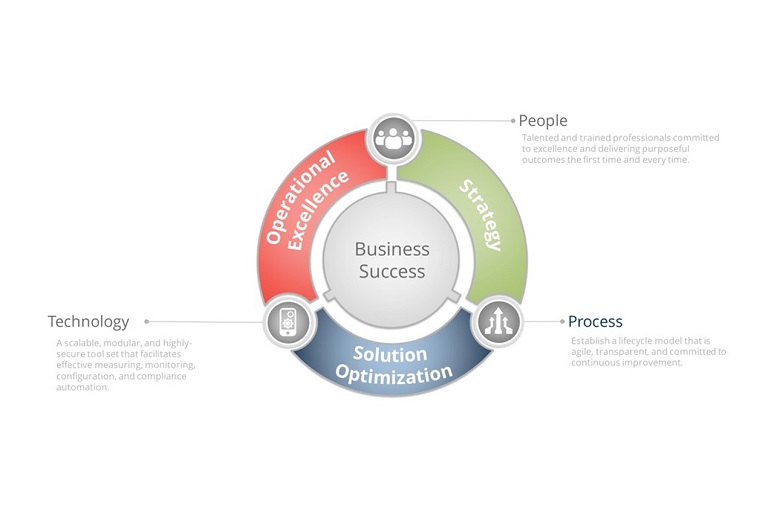In my previous No Jitter article, “
How ChatOps Can Improve IT Operations,” I described the integration of chat applications like Slack or Microsoft Teams with automation tools. This combination enables IT operations teams to quickly answer common questions, and perform relatively simple actions from within the chat environment. I didn’t explicitly mention a critical aspect: the integration of the operations triad that consists of people, process, and technology. It’s imperative to have the right people using a well-developed process employing the proper technology to quickly solve challenging IT problems or create designs that result in fewer opportunities for problems.
People
The most critical element of the triad is people. It’s amazing what talented and trained staff can do with basic tools—add some process and technology, and the results can be incredible. Management’s major task is to create an environment in which everyone is motivated and presented with clear, achievable goals. Part of driving this motivation involves empowering the staff to do the right thing in different situations, and to ask for guidance when the right course is unclear. Everyone should have a full understanding of the risk levels that the business should operate within and use those constraints to inform decisions. For example, a major configuration change would be riskier without a test plan and exit strategy.
Providing the proper training is very easy in today’s Internet-enabled environment. Different people have different preferred learning methods—some prefer reading, while others prefer video, and another group favors hands-on learning. Training is often the first thing to get cut in economic downturns, which is a mistake because it hampers the IT team from learning things that help them improve operations. While budgets need to adapt to the business climate, there are creative and inexpensive approaches to IT education, frequently in the form of free videos and articles. People need training on the processes for the IT systems and for the technology that is employed.
ChatOps aims to get decision-making and troubleshooting data to the team members who can make decisions on how to handle it, quickly and easily.
Process
Well-developed processes allow team members to focus on the higher-level task while performing low-level tasks like data collection and correlation. Processes function much like
checklists, identifying the sequence of individual steps to follow when working on a known problem or performing a defined task. The runbooks which describe the steps to assist help-desk workers in resolving problems are a good example. Higher-level process tasks frequently become a series of simple processes. Once a task is clearly understood, examine the use of automation to make it run faster, smoother, and with fewer human errors.
Processes can be greatly simplified by using a small set of standard network designs. If all sites are built from a few standard designs, then the configuration, monitoring, and troubleshooting of all sites can also be standardized. For example, make all branch sites follow the same basic design, perhaps with two or three variations that account for size differences. Do the same thing for data center designs and cloud infrastructure. The objective is to achieve significant reductions in OpEx, which may necessitate a slight increase in CapEx due to standardization. Justin Pietsch’s article, “
Get the Network Out of the Way” offers a detailed analysis of the tradeoffs. He also points out that better designs result in lower overall costs, implying that the right people with good design processes that apply the right technology will result in better performance and lower overall costs.
Technology
Technology provides the means by which the team can monitor and manage IT systems. ChatOps, as mentioned earlier, is a great example because a good network monitoring system and an application performance monitoring system are critical components. As business management consultant Peter Drucker famously said, “You can’t manage what you can’t measure,” and monitoring systems provide you with the ability to measure.
However, there are challenges with monitoring systems outside the fundamental technology. I’ve seen too many examples of network management systems that have been abandoned by the technical staff because the product’s champion, who was often the only expert user, left the organization. In many cases, the organization was still paying support fees on an unused system. Proper training and vendor support could allow these systems to continue to provide value to the organization, demonstrating the tie between people and technology.
Automation is the most recent addition to the technology toolbox, pioneered by the server and application teams. Network automation is more challenging for a variety of reasons, including the need for physical connectivity and device-specific functions (routing, switching, firewall, load balancing, etc.). Device vendors don’t yet support high-fidelity virtual instances that allow for the creation of “digital twin” networks that facilitate testing and what-if analysis. The need for this capability is growing and I expect to see products in the next few years.
The Significance of Merging People, Process, and Technology
People are the most critical element of the triad because they determine the processes that must be used to effectively use the technology to best help the business. Conversely, the staff must adapt as technology changes. A great example from the past is the transition from PBX voice systems to voice over Internet Protocol (VoIP). VoIP technology facilitated a change in call center operations as well as changes in how voice systems are designed, installed, and managed. A similar change is underway with respect to the use of automation in networks.
Adapting to change is what makes these transitions difficult. Managing the culture change can be challenging. That’s why investing in the best people and their education is critical. They will understand why the change is necessary. That will translate into the best application of the technology with good processes.










